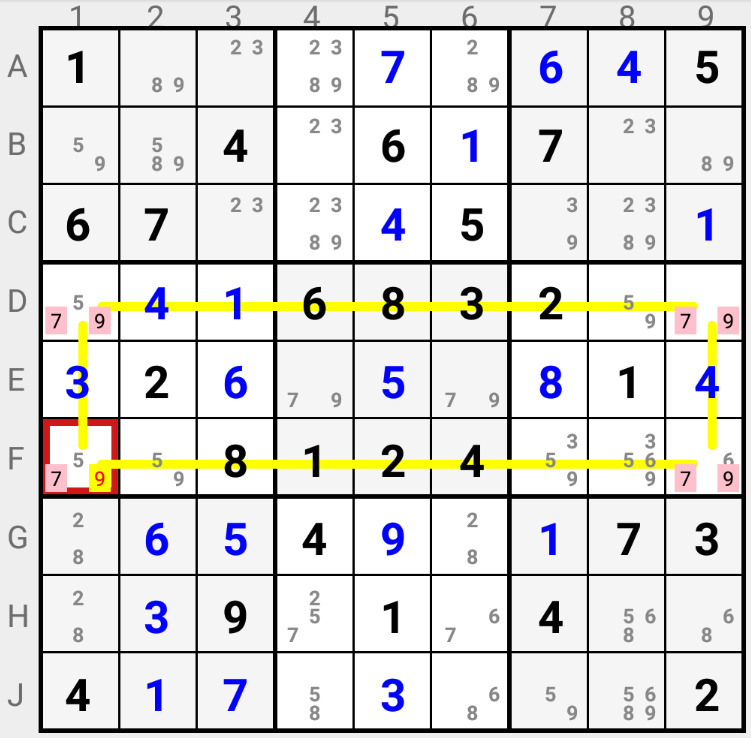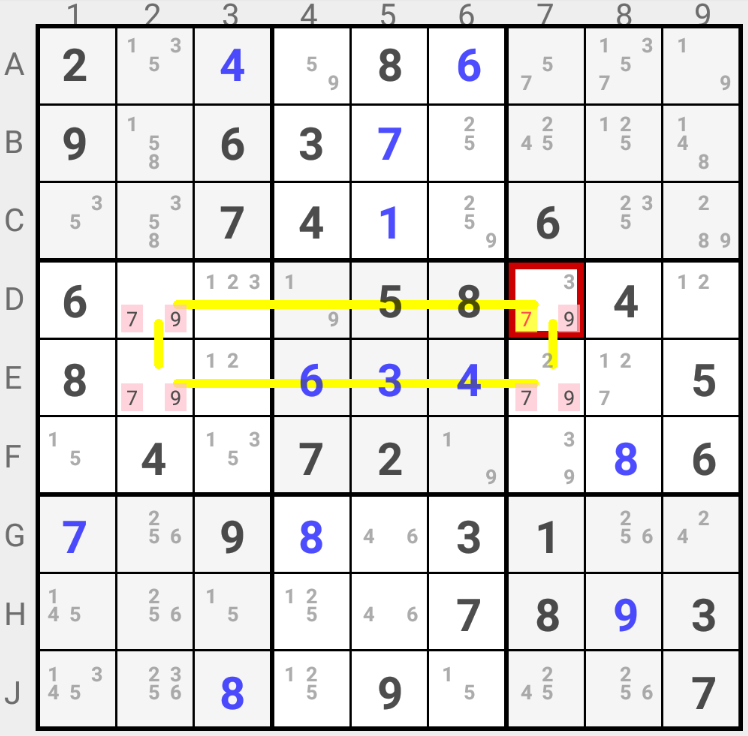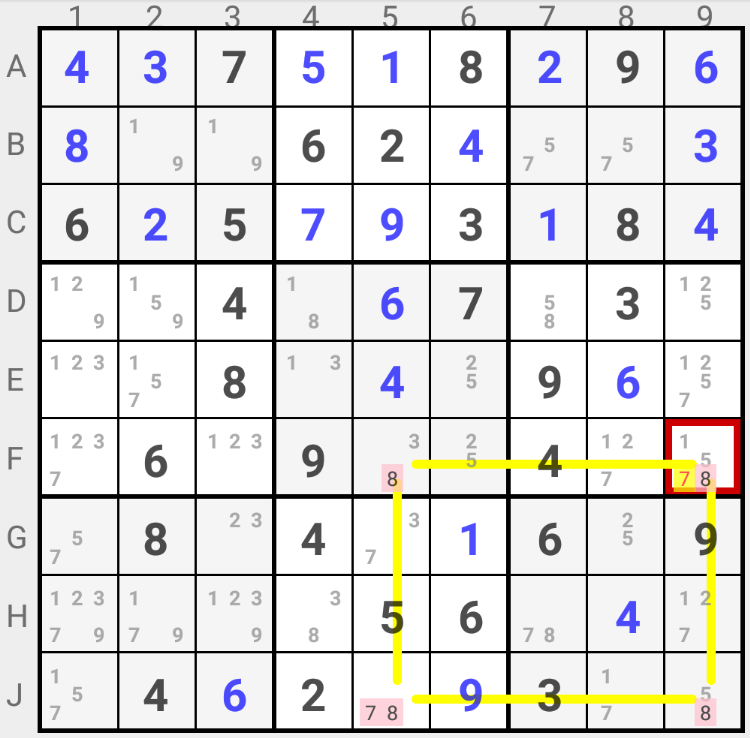Hidden Unique Rectangle
Let us define a Deadly Pattern as a configuration of candidates that leads to several solutions for a particular puzzle. The simplest example being a puzzle with only two unsolved Cells containing the same two candidates: such a puzzle has two solutions. A proper Sudoku puzzle has a unique solution, thus solving a puzzle should not lead to a "Deadly Pattern".
In this strategy, we are looking for potential Deadly Patterns involving two candidates in four Cells forming a rectangle: two Cells in two Rows and two Columns and two Squares in total.
HIDDEN UNIQUE RECTANGLE (TYPE 1) : If one corner of the rectangle is a "Bi-Value" Cell, if the candidates present in this "Bi-Value" Cell are also present in the three other corners of the rectangle among other candidates, and if in the corner opposite to the "Bi-Value" Cell one of these candidates is only present twice in the Row and in the Column to which this opposite Cell belongs (i.e. only in the three corners that are not the "Bi-Value" Cell), then the other candidate of the "Bi-Value" Cell can not be the solution in the opposite Cell.
Otherwise, this would lead to a Deadly Pattern.

In this example if candidate 9 were the solution in F1 then candidate 7 would be the solution in D1 and in F9, and candidate 9 the solution in D9. In such a configuration D1, D9, F9 and F1 form a Deadly Pattern because candidates 7 and 9 are interchangeable, leading to two solutions for the puzzle. Hence candidate 9 can not be the solution in F1 and it can be eliminated in that Cell.
HIDDEN UNIQUE RECTANGLE (TYPE 2) : If two corners of the rectangle in the same Row/Column are "Bi-Value" Cells with the same candidates (forming a Naked Pair),
if the candidates present in these "Bi-Value" Cells are also present in the two other corners of the rectangle among other candidates,
and if one of these candidates is only present in the "Bi-Value" Cell and in the non "Bi-Value" Cell in the same Column/Row, then the other candidate of the "Bi-Value" Cell can not be the solution in the other non "Bi-Value" Cell.
Otherwise, this would lead to a Deadly Pattern.

In this example if candidate 7 were the solution in D7, then candidate 9 would be the solution in D2, candidate 7 the solution in E2 and candidate 9 the solution in E7. This configuration would be a Deadly Pattern because candidates 7 and 9 would be interchangeable in these four Cells, leading to two different solutions for the puzzle.
Hence candidate 7 can not be the solution in D7 and it can be eliminated in that Cell.
HIDDEN UNIQUE RECTANGLE (TYPE 3) :
Let us consider a rectangle in which three corners are "Bi-Value" Cells with one common candidate. Let us call the Cell opposite (i.e. along the diagonal) to the fourth Cell the "keystone" Cell.
If this fourth Cell contains among other candidates the same candidates as the "keystone" Cell, and if the common candidate is only present in the non "Bi-Value" Cell and in the "Bi-Value" Cell in the same Row/Column, then the other candidate of the "keystone" Cell can not be the solution in the non "Bi-Value" Cell.
Otherwise, this would lead to a Deadly Pattern.

In this example if candidate 7 were the solution in F9, then candidate 8 would be the solution in F5 and in J9, and candidate 7 the solution in J5. This configuration would be a Deadly Pattern because candidates 7 and 8 would be interchangeable in these four Cells, leading to two different solutions for the puzzle.
Hence candidate 7 can not be the solution in F9 and it can be eliminated in that Cell.
You can practice this strategy by installing the SudokuCoach application on your Android™ device.
